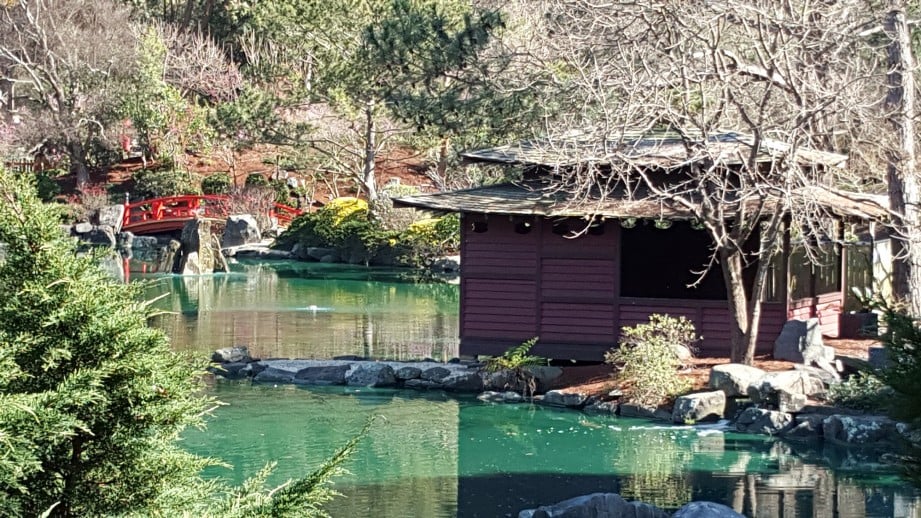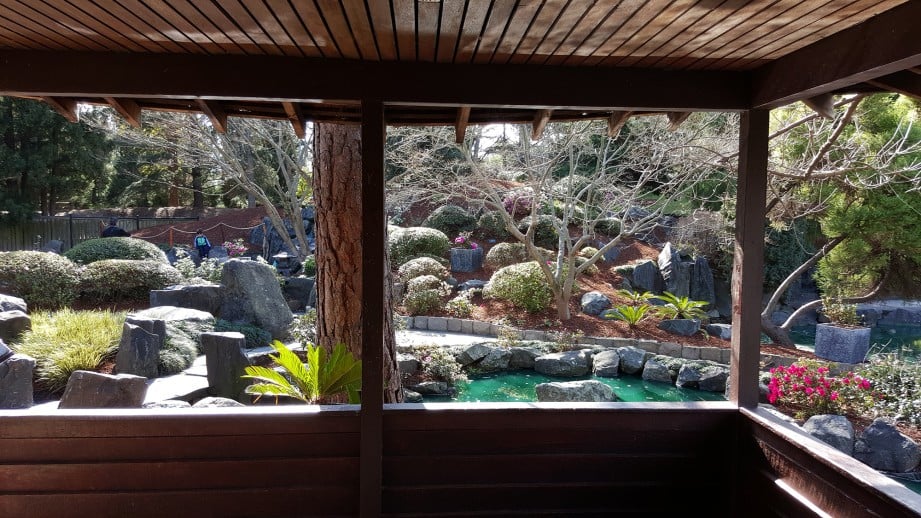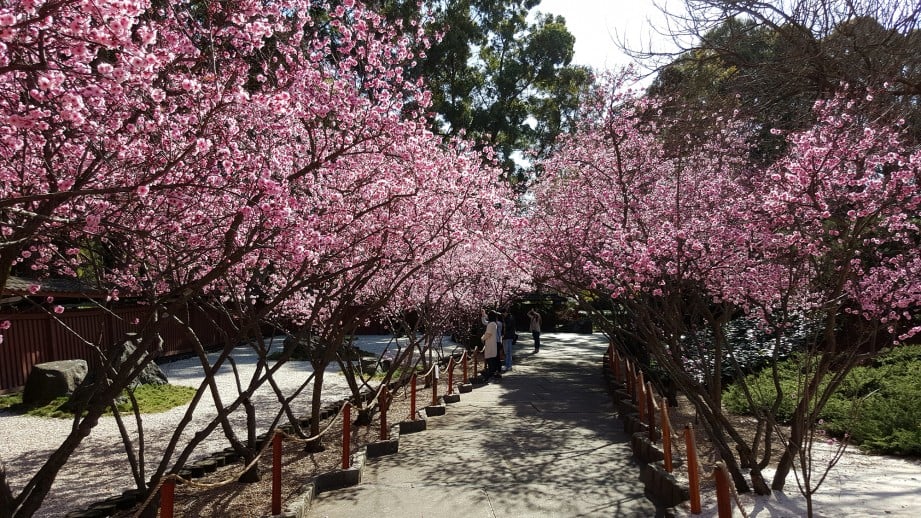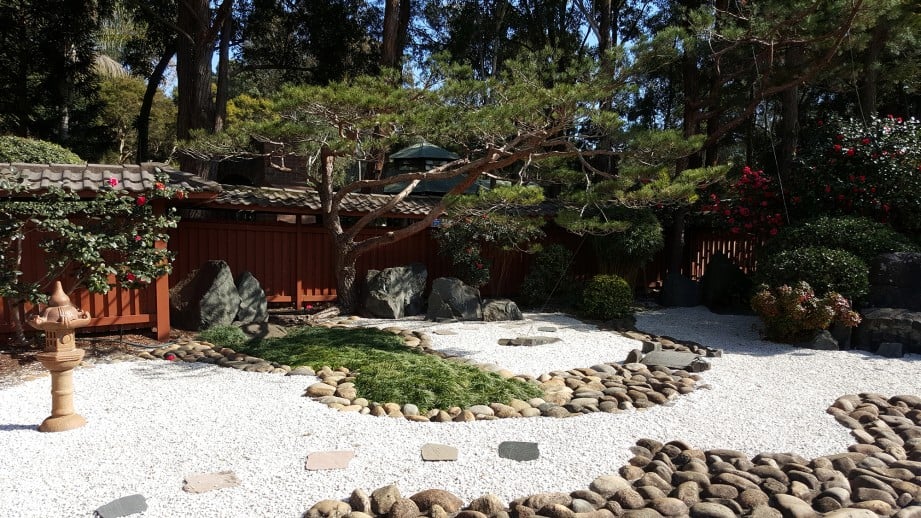The Auburn Botanic Gardens is 9.2 hectares in size and attracts thousands of visitors each year, including a significant number from outside Australia. The central formal area – with reflection pool, pergola and sunken rose garden – has flowers and blossoms through the year.
The topography of the site, which slopes gently towards the Duck River, has been altered to create interesting perspectives and microclimates. Three habitats provide an experience of ‘Australia’ in the city – the woodlands theatre, the native garden and billabong, and the Australian rainforest.
An amphitheatre is located in the centre of the Gardens and consists of a covered outdoor stage area, dressing rooms, public toilets and a large sloping grassed area for audiences. The amphitheatre is used for a variety of purposes including stage productions, concerts, community events and social functions.
The Native and Rainforest Garden is located in the western part of the Auburn Botanic Gardens near the fauna reserve and amphitheatre. It is a popular setting for organised events including wedding and civil ceremonies and wedding photography. The Native and Rainforest Garden has numerous native plants and trees around a shady billabong and is bordered by scrub woodland plantings and grassed areas. The area’s wildlife includes Cape Barren Geese, Dusky Moorhens, peacocks and Australian Brush turkeys. The thick canopy of foliage over the rainforest and native garden produces a moist, deep littered leaf mould groundcover. The section is also utilised for Australian themed wedding or civil ceremony and wedding photography.
The Fauna Reserve is located adjacent to the Avenue of Remembrance and the Native and Rainforest Garden. It was opened in 1994 and is home to flora and fauna that was indigenous to the Auburn area before it was developed. Animals in the Fauna Reserve include Eastern Grey Kangaroos, Red-necked Wallabies, Swamp Wallabies, Emus and Common Wombat.
The Aviary was officially opened in 1988 and was supported as a Bicentennial Project by the Commonwealth Government. It is located opposite the entrance to the Botanic Gardens and contains a unique range of birds from Australia and the Asia Pacific region. The Aviary is divided into four separate themed areas.
The Asian Aviary contains birds native to the Asia Pacific Region.
The Rainforest Aviary displays birds from tropical regions of New South Wales and Queensland.
The birds in the Outback Aviary can be found in Central and Northern Australia.
The Woodlands Aviary has birds which are found in forested areas of Australia.
There are a number of animals that wander freely around the Botanic Gardens and the Fauna Reserve. These include Cape Barren Geese, Domestic Geese and Indian Peafowl (Peacocks). During the spring and summer months the Peacocks display their beautiful tail feathers to impress the females (Peahens).
The waterways in the Auburn Botanic Gardens attract a number of water birds native to the area such as Dusky Moorhen, Pied and Little Cormorant, Wood Duck, Pacific Black Duck, Chestnut Teal and White-faced Heron.
Many native birds reside in the different sections of Auburn Botanic Gardens including Black-faced Cuckoo Shrike, Magpie-lark, Pied Butcherbird, Fairy Wren, Figbird and Olive-backed Oriole.
The Scented Garden is located in the central part of the Auburn Botanic Gardens and is adjacent to the Avenue of Remembrance. It is a very popular setting for organised events including wedding and civil ceremonies and wedding photography. It was designed so that visitors would be treated to floral aromas such as Frangipani, Lavender and Sage. Key features of the Scented Garden include the Undercover Wedding Pavilion and the Reflection Pool.
The Undercover Wedding Pavilion is a tranquil setting amongst flower beds, an avenue of Liquid Amber Trees and a hedge garden.
The Reflection Pool branches off from the Undercover Wedding Pavilion and is lined on both sides by pine trees. The pine tree at the end of the Reflection Pool is a progeny of the Stone Pine at the Lone Pine Cemetery in Gallipoli. The Reflection Pool is at its most beautiful in autumn.
The Sunken Rose Garden is located in the centre of the Auburn Botanic Gardens and is adjacent to the Scented Garden. The Sunken Rose Garden features ceremonial arches and David Austin Roses with a variety of colours and fragrances. The Sunken Rose Garden is at its most beautiful between October and January.
The Japanese Garden is one of the most popular sections in the Auburn Botanic Gardens and is visited by thousands of people each year.
The Japanese Garden has traditional landscaping and:
• Beautiful flowering Azaleas
• Decorative bridges
• A large lake with central island and stocked with colourful Koi carp
• Ornamental trees
• Ryoan-ji style garden
• Sea shoreline
• Symbolic mountains
• Traditional Tea House
• Tiled Moon Gate
• Torrii Gate
• Traditional pine trees
• Waterfalls
• Worshipping stone
• Zen Garden
The Japanese Garden is at its most beautiful during the annual Cherry Blossom Festival between mid – August and early September. Cherry blossom is highly symbolic in Japanese culture representing beauty and the fragility of life.









